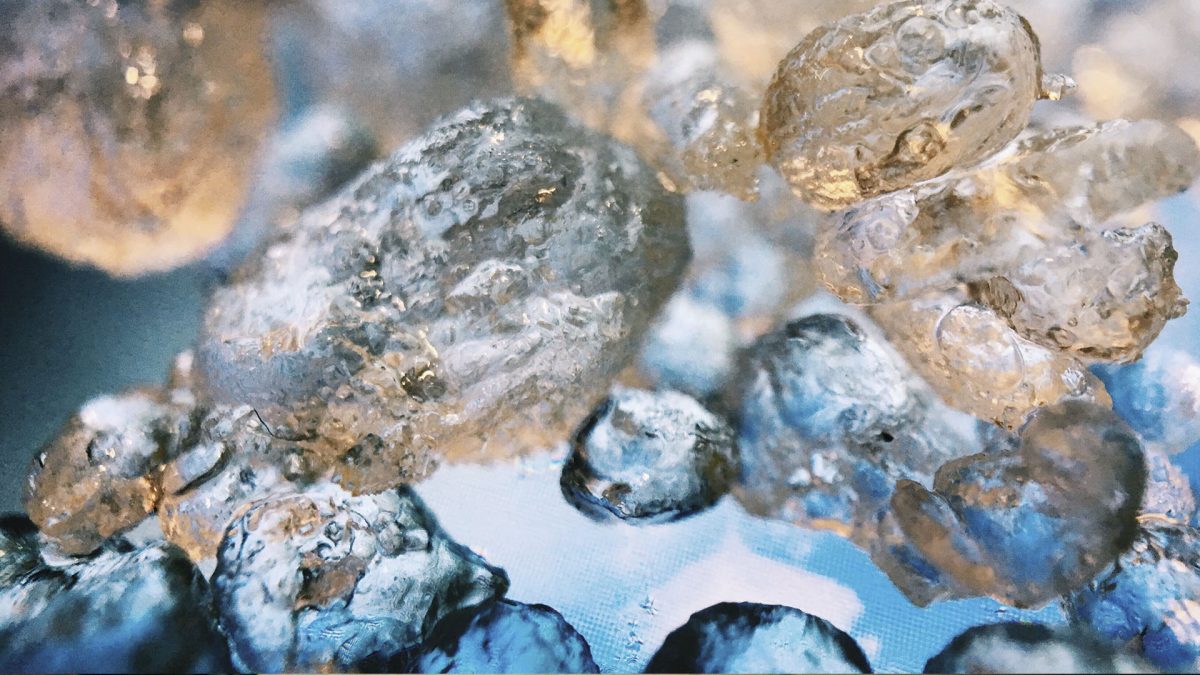The following devotional describes some object lessons offered by a physicist engaging both science and the Word.

In the greatest sermon ever delivered, Jesus, on a hill near the Sea of Galilee, said of His followers: “You are the salt of the earth” and “you are the light of the world” (Matt. 5:13, 14).
I know that Jesus didn’t intend these remarks to be a meditation on the elemental nature of salt and light, but as a student of physics, I can’t resist using nature to draw some spiritual lessons. Please indulge me.
Salt is a compound made up of two elements, sodium and chlorine, technically known as sodium chloride. The taste buds in our tongues have specialized nerve endings that are stimulated on receiving the sodium and chlorine ions dissolved in water. These ions trigger an unbalance in the electrical charge within the sensory nerves, and this signal is sent to the brain, where it is decoded as the sensation of saltiness.
Salt was often used to preserve food, because salt inhibits bacterial growth. Preservation is achieved as salt is embedded into the moisture of food cells. So for salt to be salty and preserve, it has to be dissolved in water.
On the other hand, we were told in physics classes that light is an electromagnetic wave that does not need a medium to propagate and is capable of traveling in a vacuum.
Light is not only a wave, but in certain circumstances it exhibits particle-like behavior, in discrete packages of energy known as photons. Scientists, for lack of a better explanation, talk of the “dual nature” of light: wavelike and particlelike. Bear in mind that in classical physics, waves and particles are mutually exclusive properties or concepts. How can two mutually exclusive properties be merged in a single physical entity we call light?
Since I was a child I have always been curious. I remember receiving a brand-new tricycle toy from my parents. It ran “automatically” as I wound it up. I wanted to know how it worked, so I dismantled it and discovered the spring mechanism responsible for the driving force. But I ended up with a problem, for I was unable to assemble it again. This inquisitive characteristic was partly responsible for my going into the field of research in physics.
This same curiosity remained after I was baptized and became a Christian at the age of 22. So when Jesus refers to His disciples as “salt” and “light,” I cannot help trying to grasp a deeper meaning in this imagery.
MORE LIGHT
Jesus says of Himself: “I am the light of the world” (John 8:12; 9:5; cf. John 12:46). Looking at the dual nature of light, we can understand how appropriate this self-description is. Light has two simultaneous natures that manifest themselves dif- ferently in different circumstances; and Jesus is the only one in the whole universe that embodies both the divine and human nature. How appropriate for Jesus, then, to refer to Himself as the “light of the world.”
The wavelike characteristic of light may be a metaphor for understanding the divine nature of Jesus, since electromagnetic waves are nonmaterial, nonlocalized in space. That means they can fill the whole environment, do not need matter to propagate, and pierce through even the interstellar vacuum. One way of thinking about this might be that the particlelike characteristic of light can be thought of as paralleling the human nature of Jesus, since particles are localized in space (they occupy a definite place in space) and can interact with each other “shoulder to shoulder.” Jesus is truly the light of this world, not only at the top of the Mount of Transfiguration but also in all instances in which He touched the “untouchables.” Since He is the source of light, His followers are encouraged to reflect His light to the world, as planets and satellites reflect the sun’s light.
EXPLOSIVE AND POISONOUS
Nowhere in Scripture do we find Jesus referring to Himself as the “salt of the earth.” If the “salt” qualification is to be understood in the sense of giving flavor and preserving life amid a world of sin, wouldn’t Jesus be the true source of abundant life and the true agency that preserves life? Why, then, does Jesus never refer to Himself as the salt of the earth?
I started to think of reasons for this from a scientific angle. We already noted that salt is composed of sodium and chlorine. Sodium is a highly reactive soft metal that burns violently and explosively, and in contact with water also explodes. Chlorine is a greenish poisonous gas that is present in many household cleaning products. None of these atomic elements’ characteristics would be appropriate to illustrate some attribute of Jesus. But it might be argued that these characteristics describe well our fallen human nature: explosive and poisonous. How fascinating that the combination of sodium and chlorine gives salt—a flavor-enhancing and food-preserving product.
Here is one spiritual lesson that we might draw from this: salt by itself cannot flavor food, nor preserve it. Only when salt is mixed with water can it flavor a meal, stimulate our taste buds, and also preserve. Only in combination with water these characteristics of salt become operational and active. A possible application for this characteristic of salt is that no one can ever be the salt of the earth by themselves. We all need Jesus, the “water of life” (John 4:14), to become the real “salt of the earth.”








